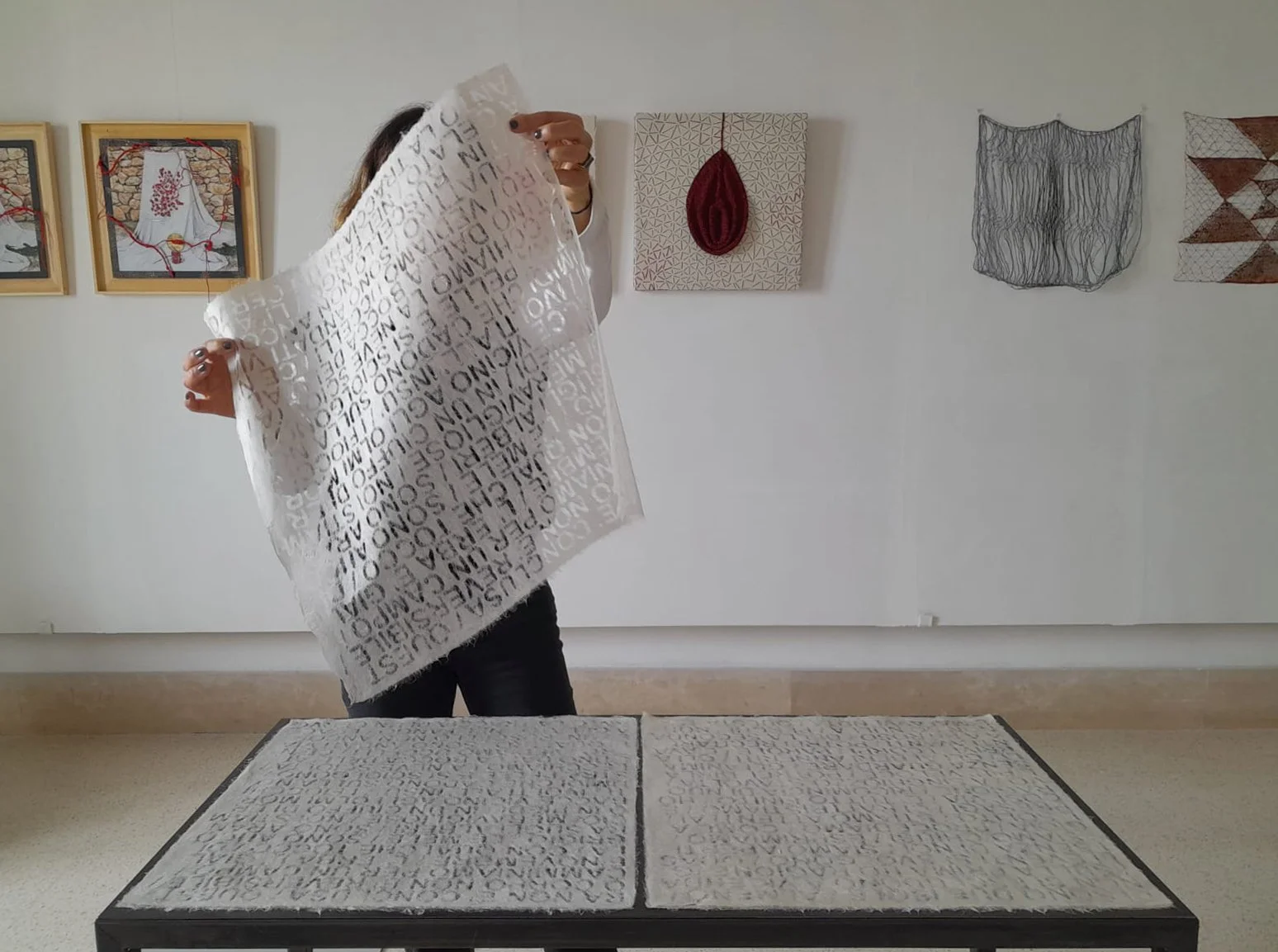Enumerazioni_ Posson le parole?
2025
Stampa Fine Art Glicée su carta Hänemüle
20,6 x 13 cm, 81 fotografie da scanner
Taccuino 21 x 14 cm
Installazione sonora tratta dal Canto:
“Nella morte di una donna fatta trucidare col suo portato dal corruttore per mano ed arte di un chirurgo” di G.Leopardi (1816)
Registrazioni sonore e montaggio Gianna Parisse
Voci Chiara Frontini, Massimo Lolli, Guy Amutay, Eleonora Scarpone, Claudia Tasso
Enumerations_ Can words?
2025
Fine Art Gicée print on Hänemüle paper
20.6 x 13 cm 81 photographs from scanner
Notebook 21 x 14 cm
Sound installation taken from the Canto: “In the death of a woman made slaughtered with her carrier by the corruptor by the hand and art of a surgeon” by G.Leopardi (1816)
Sound recordings and editing Gianna Parisse
Voci Chiara Frontini, Massimo Lolli, Guy Amutay, Eleonora Scarpone, Claudia Tasso
Parallelamente al Glass Celing Index 2025, pubblicato l’otto Marzo dall’Economist, altri numeri arrivano dalla cronaca italiana che nel 2024 ha visto ottantuno omicidi di donne per mano soprattutto di familiari.
Enumerazioni_Posson le parole? consiste in una polifonia visiva di ottantuno volti femminili, ripresi da scanner e una registrazione sonora nella quale una sequenza di voci recitano frammenti di versi tratti dal canto di Leopardi: “Nella morte di una donna fatta trucidare col suo portato dal corruttore per mano ed arte di un chirurgo”.
Il canto del poeta è uno dei primi scritti in cui si parla di feminicidio, derivato da un caso di cronaca in cui una giovane donna, Virginia del Mazzo incinta dell’amante, fu uccisa dallo stesso mentre la operava per farla abortire. In un primo tempo giudicato colpevole, poi assolto.
Leopardi espresse assoluta vicinanza alla vittima, tanto che suo padre non volle che l’editore stampasse il canto in quanto la vicenda era considerata eccessivamente scandalosa. Scritto nell’ 1816, fu solo nel 1906 che fu pubblicato.
Nel canto c’è la compassione verso la vittima, la sua difesa morale e la partecipazione affettiva alla quale l’autore parla in prima persona esprimendo parole dure nei confronti dell’omicida.
Colpisce in particolare, la riflessione che uno dei più grandi poeti solleva, ovvero l’incapacità delle parole di descrivere il dolore e il dramma della vittima e se una voce mortale possa mai rendere giustizia al suo calvario.
Proprio da qui, dalla consapevolezza che l’arte e le parole sono fragili, insufficienti di fronte al dolore che l’opera prende forma. Ed è in questo loro limite che trovano il senso più profondo: nel tentativo, sempre incompiuto, di rendere giustizia a ciò che non può essere detto.
Parallel to the Glass Celing Index 2025, published on March 8 by the Economist, other numbers come from the Italian chronicle, which in 2024 saw eighty-one murders of women at the hands mostly of family members.
Enumerations_Posson le parole? consists of a visual polyphony of eighty-one female faces, captured by scanners, and a sound recording in which a sequence of voices recite fragments of verses from Leopardi's song, “In the death of a woman made slaughtered with her bearing by the corruptor by the hand and art of a surgeon.”
The poet's song is one of the earliest writings in which feminicide is discussed, derived from a news case in which a young woman, Virginia del Mazzo, pregnant by her lover, was killed by the same while he was operating on her to have her aborted. At first found guilty, then acquitted. Leopardi expressed absolute sympathy for the victim, so much so that his father did not want the publisher to print the song as the affair was considered excessively scandalous. Written in 1816, it was not until 1906 that it was published.
In the song there is compassion towards the victim, his moral defense and emotional participation to which the author speaks in the first person expressing harsh words towards the murderer.Striking in particular, the reflection that one of the greatest poets raises, namely the inability of words to describe the pain and drama of the victim and whether a mortal voice can ever do justice to his ordeal.
It is from here, from the awareness that art and words are fragile, insufficient in the face of pain that the work takes shape. And it is in this limitation of theirs that they find their deepest meaning: in the attempt, always unfinished, to do justice to what cannot be said.
< works
< Corpi d’aria
Du insoluj >








